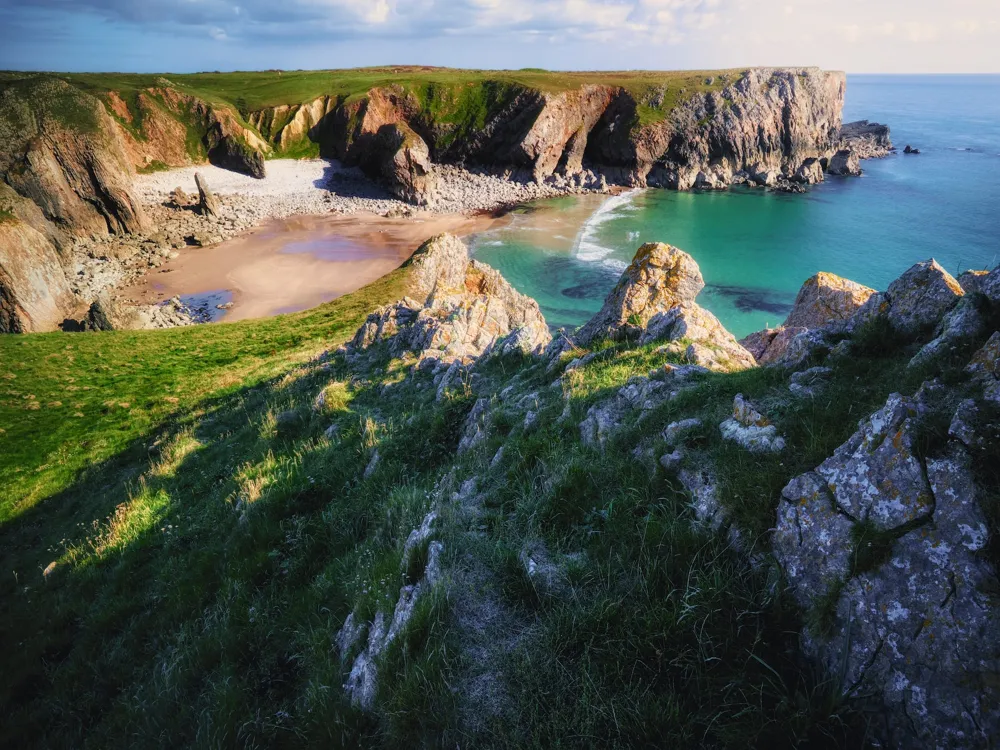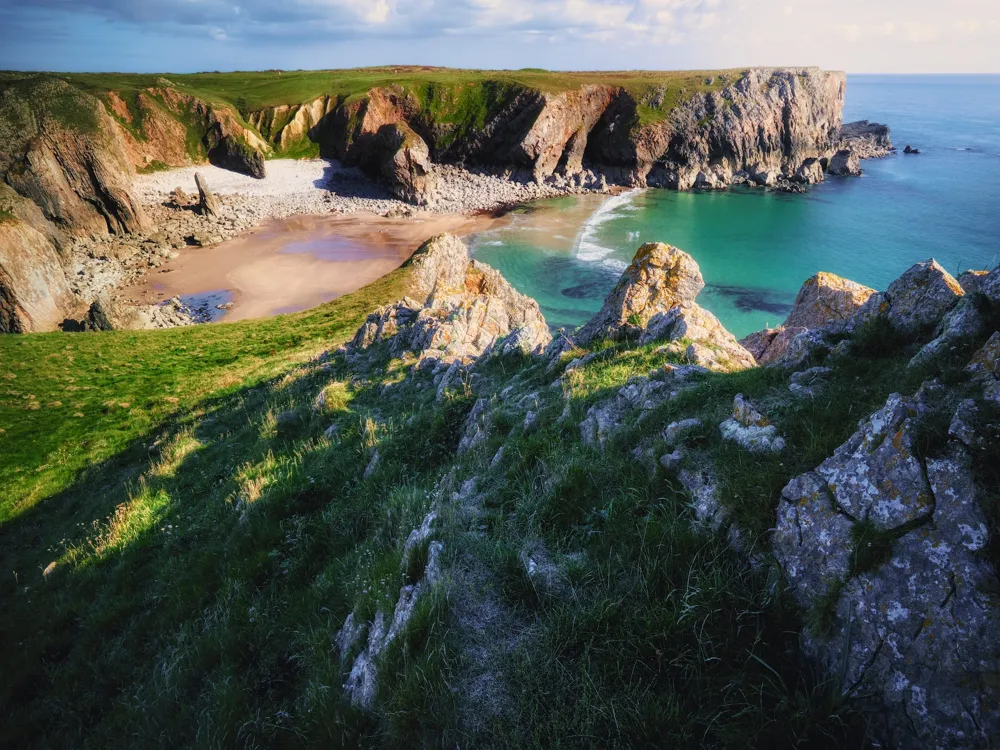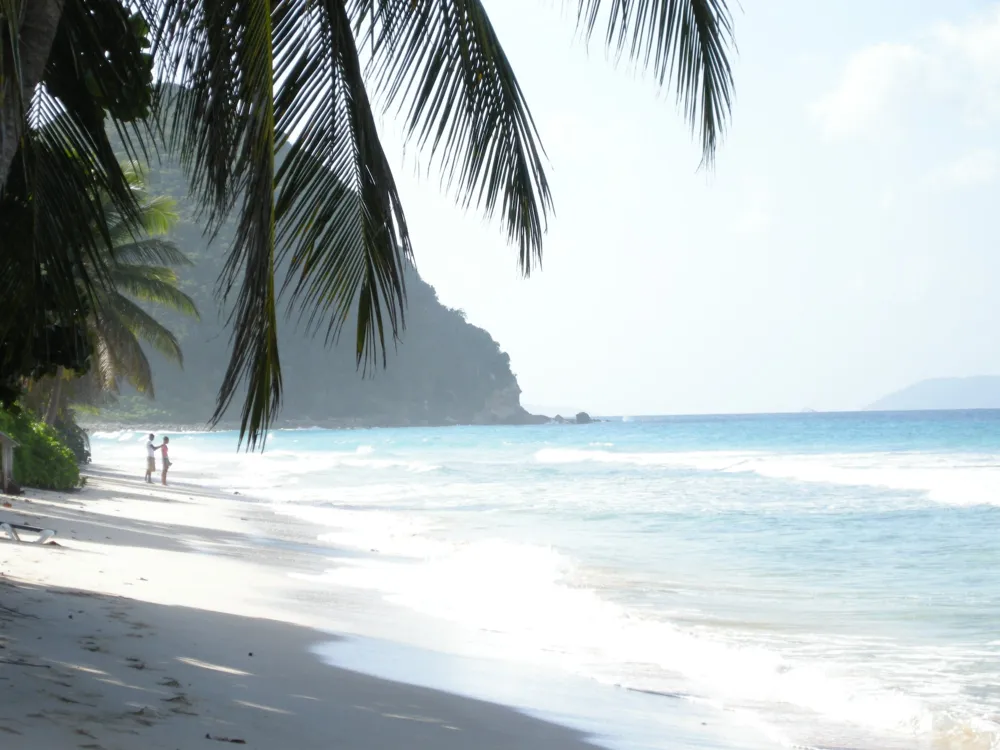Halong Bay, a UNESCO World Heritage site in Vietnam, is a spectacular seascape that stretches over 1,500 square kilometers. Known for its crystal-clear waters and towering limestone islands topped with rainforests, Halong Bay offers a breathtaking natural beauty that is nearly unmatched anywhere on the globe. This majestic bay is not only a haven for nature enthusiasts but also a testament to the intricate history and culture of Vietnam. The name 'Halong' literally means 'descending dragon,' which is derived from a local legend that speaks of dragons sent by the gods to protect Vietnam from invaders. According to the legend, these dragons spat out jewels and jade, which turned into the islands and islets dotting the bay, forming a formidable barrier against invaders.
Visitors to Halong Bay are mesmerized by its ethereal beauty, which changes with the time of day and weather, offering a kaleidoscope of scenery. The area is recognized for its rich biodiversity, with its waters home to a variety of marine life, and its islands featuring lush forests that are a habitat for numerous species of birds and animals. The bay's geographical history is as fascinating, with scientists believing that it has undergone various stages of change over millions of years, shaping the unique landscape we see today. The bay's beauty is complemented by its cultural significance, with several historical and cultural sites scattered across the islands, including ancient caves and fishing villages that have remained unchanged for centuries.
The architecture of Halong Bay is not characterized by buildings but by its natural geological formations. The bay is renowned for its striking limestone karsts and isles in various shapes and sizes. These limestone pillars are the result of millions of years of erosion and weathering. They tower over the bay, with some reaching heights of over 100 meters, creating a natural architecture that is both imposing and serene.
The most remarkable aspect of Halong Bay's architecture is how these formations have been shaped by natural forces. Over millennia, wind and water have sculpted these limestone karsts into fascinating shapes, many of which have inspired local legends. For instance, the 'Fighting Cocks' islets, two limestone peaks that resemble two roosters facing off, are a popular sight among tourists. The bay's caves, like Sung Sot (Surprise) and Thien Cung (Heavenly Palace), offer an inside look at the architectural marvels of nature. These caves are adorned with stalactites and stalagmites in various shapes and sizes, creating an otherworldly atmosphere inside.
The best time to visit Halong Bay is during the spring (March to May) and autumn (September to November) months when the weather is pleasant, and the skies are clear. Selecting the right cruise is crucial for your Halong Bay experience. Consider the duration, route, and the amenities offered by the cruise. Halong Bay offers a variety of local seafood dishes. Don't miss trying the fresh squid, a specialty of the area, usually served grilled or fried. Being a UNESCO World Heritage site, it's important to practice responsible tourism. Avoid littering and respect the natural environment and local culture.
Halong Bay is accessible from Hanoi, the capital of Vietnam. The most common way to reach Halong Bay is by road, which takes about 3-4 hours. There are also options for shuttle buses, private cars, or seaplane transfers for a more scenic route. Once at Halong Bay, the primary mode of exploration is via boat or cruise, offering various itineraries to explore the bay's numerous islands and caves.
Overview of Halong Bay
Architecture of Halong Bay
Tips When Visiting Halong Bay
Best Time to Visit
Choosing a Cruise
Local Cuisine
Responsible Tourism
How To Reach Halong Bay
Dau Go Cave
Halong Bay
₹ 15,260 onwards
View halong-bay Packages
Halong-bay Travel Packages
View All Packages For Halong-bay
Top Hotel Collections for Halong-bay

Private Pool

Luxury Hotels

5-Star Hotels

Pet Friendly
Top Hotels Near Halong-bay
Other Top Ranking Places In Halong-bay
View All Places To Visit In halong-bay
View halong-bay Packages
Halong-bay Travel Packages
View All Packages For Halong-bay
Top Hotel Collections for Halong-bay

Private Pool

Luxury Hotels

5-Star Hotels

Pet Friendly






















